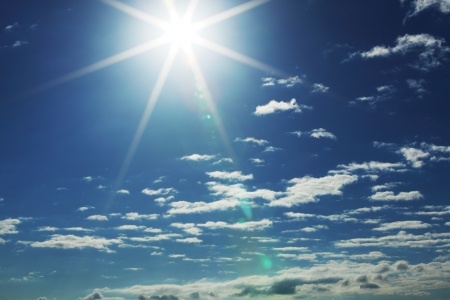
MANILA, Philippines — The heat index in Butuan City, Agusan del Norte reached a sizzling and dangerous 47 °C on Wednesday, the Philippine Atmospheric, Geophysical and Astronomical Services Administration (Pagasa) said.
Meanwhile, Metro Manila and 38 more areas logged heat indices ranging from 42 to 46 °C on May 15:
46 °C
- Dagupan City, Pangasinan
- CBSUA in Pili, Camarines Sur
45 °C
- Bacnotan, La Union
- Cubi Point in Subic Bay, Olongapo City
- Sangley Point, Cavite
- San Jose, Occidental Mindoro
- Virac, Catanduanes
- Iloilo City, Iloilo
- Dumangas, Iloilo
- Guiuan, Eastern Samar
- Dipolog, Zamboanga del Norte
44 °C
- Aparri, Cagayan
- Iba, Zambales
- Ambulong in Tanauan, Batangas
- Cuyo, Palawan
- Roxas City, Capiz
43 °C
- Ninoy Aquino International Airport
- Sinait, Ilocos Sur
- Laoag City, Ilocos Norte
- MMSU in Batac, Ilocos Norte
- Tuguegarao City, Cagayan
- Clark International Airport, Pampanga
- Casiguran, Aurora
- Alabat, Quezon
- Legazpi City, Albay
- Masbate City, Masbate
- Catarman, Northern Samar
- Tacloban City, Leyte
- Borongan, Eastern Samar
- Zamboanga City, Zamboanga del Sur
- Davao City, Davao del Sur
42 °C
- ISU in Echague, Isabela
- Puerto Princesa City, Palawan
- Daet, Camarines Norte
- Juban, Sorsogon
- Siquijor, Siquijor
- Catbalogan, Samar
- Surigao City, Surigao del Norte
According to Pagasa, heat index is “a measure of the contribution that high humidity makes with abnormally high temperatures in reducing the body’s ability to cool itself.”
Heat indices ranging from 42°C to 51°C degrees Celsius fall under the “danger” category, and people exposed to these heat indices are prone to heat cramps, exhaustion, and even heat stroke with drawn-out exposure.
To prevent the effects of intense heat, the state weather bureau said the public must limit time spent outdoors; drink plenty of water; avoid tea, coffee, soda, and liquor; use umbrellas, wear hats and sleeved clothing outdoors; and schedule strenuous activities on the cooler periods of the day.
It also noted that symptoms of heat-related illnesses include heavy sweating, exhaustion or fatigue, dizziness or lightheadedness, blacking out or feeling dizzy when standing, a weak but fast pulse, nausea, and vomiting.
In cases of heat-related emergencies, Pagasa advised the public to do the following:
- Move the person to a shaded area and lie him or her down with legs elevated
- If conscious, have the person sip cool water
- Remove extra layers of clothing
- Apply cool water to the skin and provide ventilation
- Apply ice packs to the armpits, wrists, ankles, and groin.
- If the condition of the person worsens, bring him or her to hospital immediately.